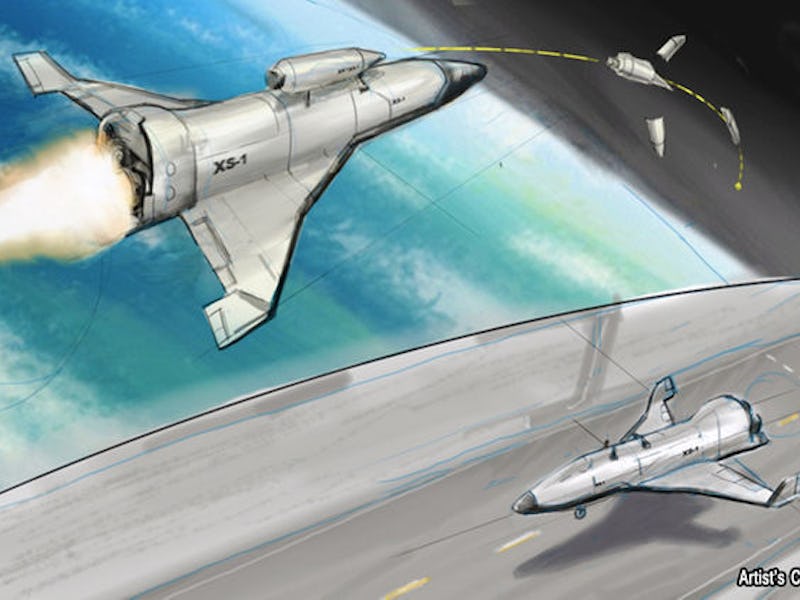3 DARPA Projects Will Make Space Safer and Cheaper

With the prospect of outer space becoming a regular, integral part of our civilization’s future, you can be sure there’s no way the Defense Advanced Research Projects Agency (DARPA) is going to be left behind. The agency, responsible for some of the strangest technological ideas and works of the modern era, is placing an active, renewed emphasis on its space projects going forward
“The questions we ask ourselves at DARPA about the space domain,” DARPA Director Arati Prabhakar said at the 4th annual Defense One Summit last week, “is what would it take to make the space domain robust for everything that we need militarily and for intelligence, and what would it take to make space a real-time operational domain, which it’s not at all today.”
Donald Trump and Mike Pence have mentioned wanting to boost American military assets in space, so this push by DARPA may be an anticipatory move to adapt to that vision.
The agency recently expounded on on three main projects that will take up the focus of its space-related plans.
Experimental Spaceplane XS-1
Artist's rendering of the X-1.
DARPA is beginning the second phase of this program, whose goal is essentially to make space access faster and cheaper.
“It’s a reusable first stage that’s designed to be able to put 3,000 or 5,000 pounds into low earth orbit…at a very low cost point — a few million dollars,” Prabhakar said at the summit. The goal by the end of the program is to fly that spacecraft 10 times in 10 days — “something that’s inconceivable with any of the spacecraft we have today.”
XS-1 has four primary directives: to fly 10 times in a 10-day period; to achieve a high enough velocity to implement a small, expendable upper stage; to demonstrate responsiveness via launch of a payload between 900 and 1,500 lbs; and to do all this for around the (reasonably low) price of $5 million per flight.
GEO Robotics
GEO stands for geosynchronous Earth orbit, the satellite-friendly region around 22,000 feet above the planet’s surface, and the robotics program DARPA is referring to could help previously isolated satellites with their maintenance needs once they’re up there. Radiation inherent to the environment — an ongoing problem for a number of space projects — makes the idea of sending in robots over humans a promising one.
The ability to safely and cooperatively service satellites in GEO would vastly expand public and private opportunities in space. It could enable entirely new spacecraft designs and operations, including on-orbit assembly and maintenance, which could dramatically lower construction and deployment costs while extending satellite utility, resilience and reliability,” said RSGS program manager Gordon Roesler in a DARPA statement. “Commercial and government space operators have sought this capability for decades. By investing together, we can achieve a capability that would be extremely challenging to do individually.”
DARPA’s Pheonix
To facilitate those GEO robotics services at a low cost, DARPA has introduced the Phoenix program, which has already completed its first phase and focuses on two primary areas of research: satlets, which are small, independent low-cost modules capable of combining to aggregate data; and a Payload Orbital Delivery system (POD), which would deliver various technical elements to the satellites that need them.
DARPA says the Phase 1 trials were promising enough to contract eight companies for Phase 2, so we’ll likely be hearing more about this in the near future.